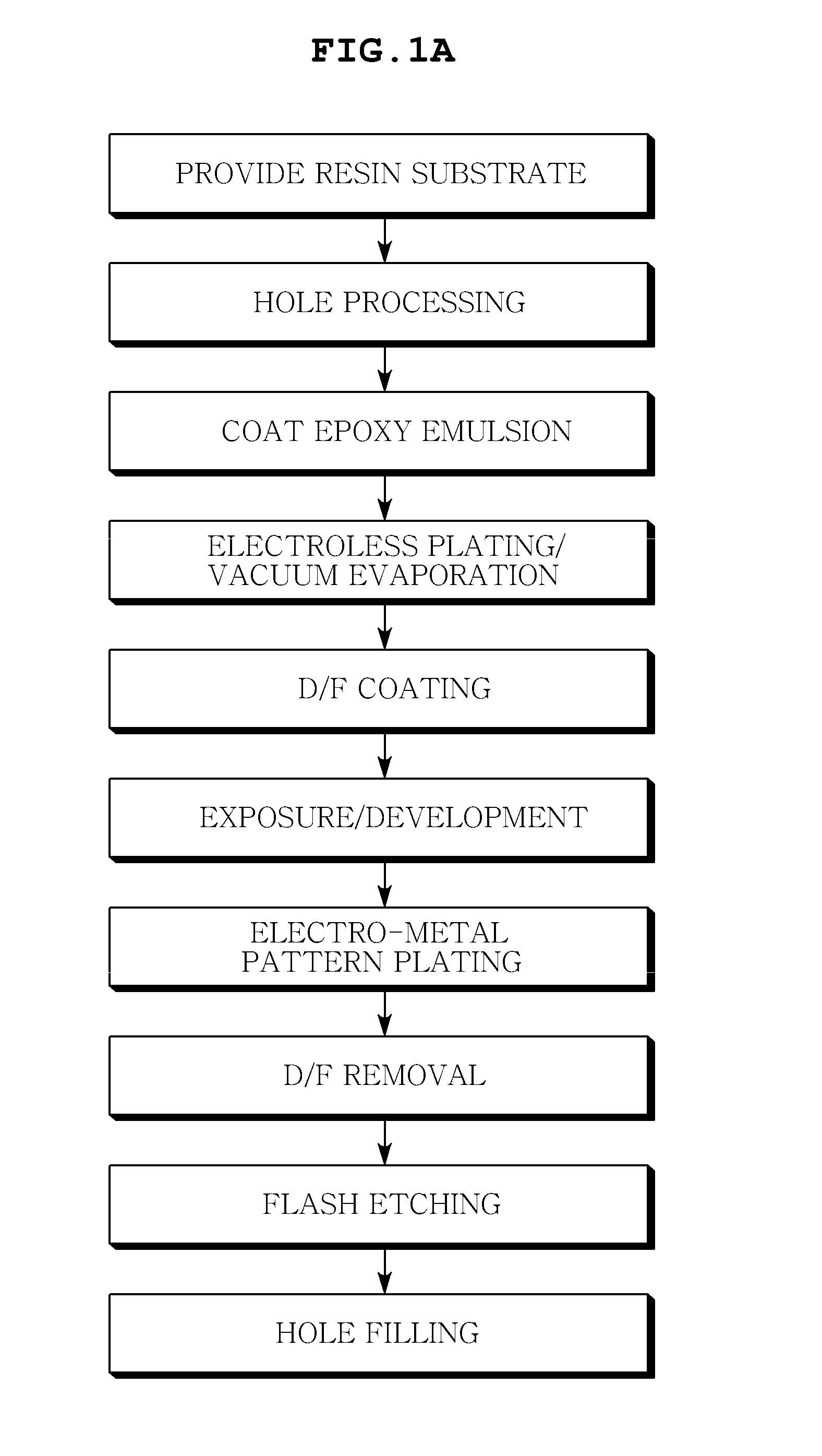Build-up printed circuit board and method of manufacturing the same
a technology of printed circuit boards and build-up, which is applied in the direction of resistive material coating, metallic material coating process, synthetic resin layered products, etc., can solve the problems of increasing surface roughness, difficult to implement fine circuits, and limited space for storing wire substrates constituting electric circuits with a variety of small-size and thin electronic devices
- Summary
- Abstract
- Description
- Claims
- Application Information
AI Technical Summary
Benefits of technology
Problems solved by technology
Method used
Image
Examples
preparation example 1
[0061]Preparation of Epoxy Emulsion
[0062]Epoxy resin (YDCN-500-90P) of 300 g and a surfactant (SDBS) of 60 g were melt in a dry oven for one hour at a temperature of about 120° C., the melt solution was cooled at a temperature of 70˜80°C., and a curing agent AEP of 10 wt % with respect to an epoxy weight was mixed with the solution. Then, a solid content of about 25 wt % was added to de-ionize water of 50° C. or higher to produce reverse emulsion, and a high speed homogenizer was forcibly mixed at an agitating speed of 12,000 rpm, and thus epoxy emulsion was prepared.
example 1
[0063]A. A via hole of about 100˜300 μm was formed in an epoxy resin substrate by using a computer numerical control (CNC) drill that is a mechanical drill, the prepared epoxy emulsion was coated on the epoxy resin substrate by using spray, and a surface roughness of the epoxy resin substrate was formed. Then, a Cu seed layer was deposited on the epoxy resin substrate in which the via hole was formed by using electroless plating. Thereafter, a pattern copper plating layer of about 10˜20 μm was formed through electro copper pattern plating at H2SO4 (120˜160 gl / l), Cu (20˜40 g / l), Cl (20˜50 ppm), Cupracid HL leveler (5-15 ml / l), air flow volume (0.05˜0.15 m3 / min), a temperature (20˜25° C.), and a current density (F / B1.5ASD), and the Cu seed layer was removed by performing flash etching by using a H2SO4 / H2O2 etching solution at an etching speed of 2 m / min. Finally, a core circuit layer was completely formed by filing the via hole at conditions of a copper paste having a viscosity of 3....
example 2
[0067]A CBGA substrate was manufactured in the same manner as described in Example 1 except that an ion beam sputter was used instead of using the electroless plating method during the process A of Example 1.
[0068]Results obtained by measuring a bonding intensity of a build-up PCB and a surface roughness of an insulation material thereof are shown in Table 1 below.
PUM
| Property | Measurement | Unit |
|---|---|---|
| Temperature | aaaaa | aaaaa |
| Thickness | aaaaa | aaaaa |
| Size | aaaaa | aaaaa |
Abstract
Description
Claims
Application Information
 Login to View More
Login to View More - R&D
- Intellectual Property
- Life Sciences
- Materials
- Tech Scout
- Unparalleled Data Quality
- Higher Quality Content
- 60% Fewer Hallucinations
Browse by: Latest US Patents, China's latest patents, Technical Efficacy Thesaurus, Application Domain, Technology Topic, Popular Technical Reports.
© 2025 PatSnap. All rights reserved.Legal|Privacy policy|Modern Slavery Act Transparency Statement|Sitemap|About US| Contact US: help@patsnap.com



